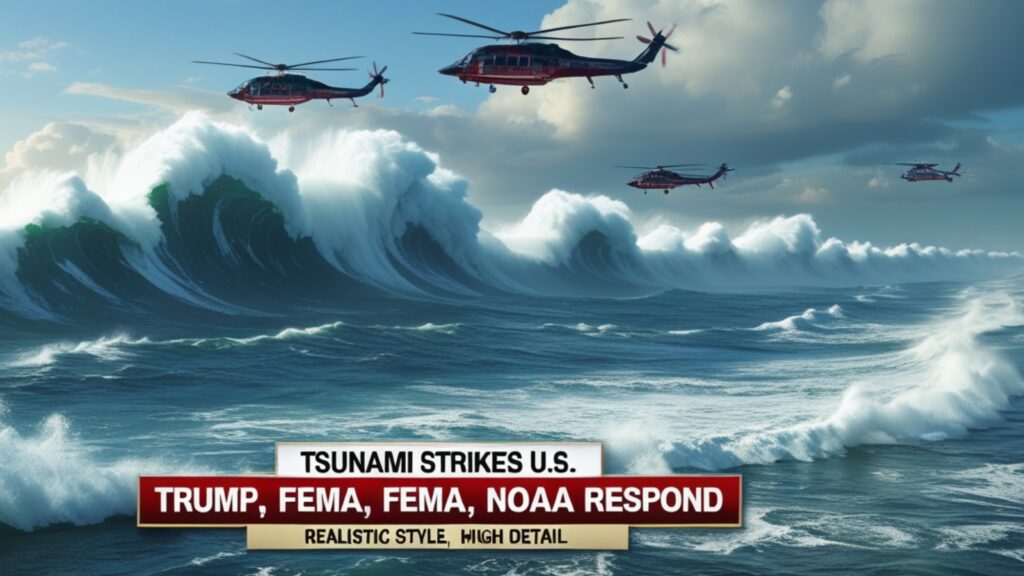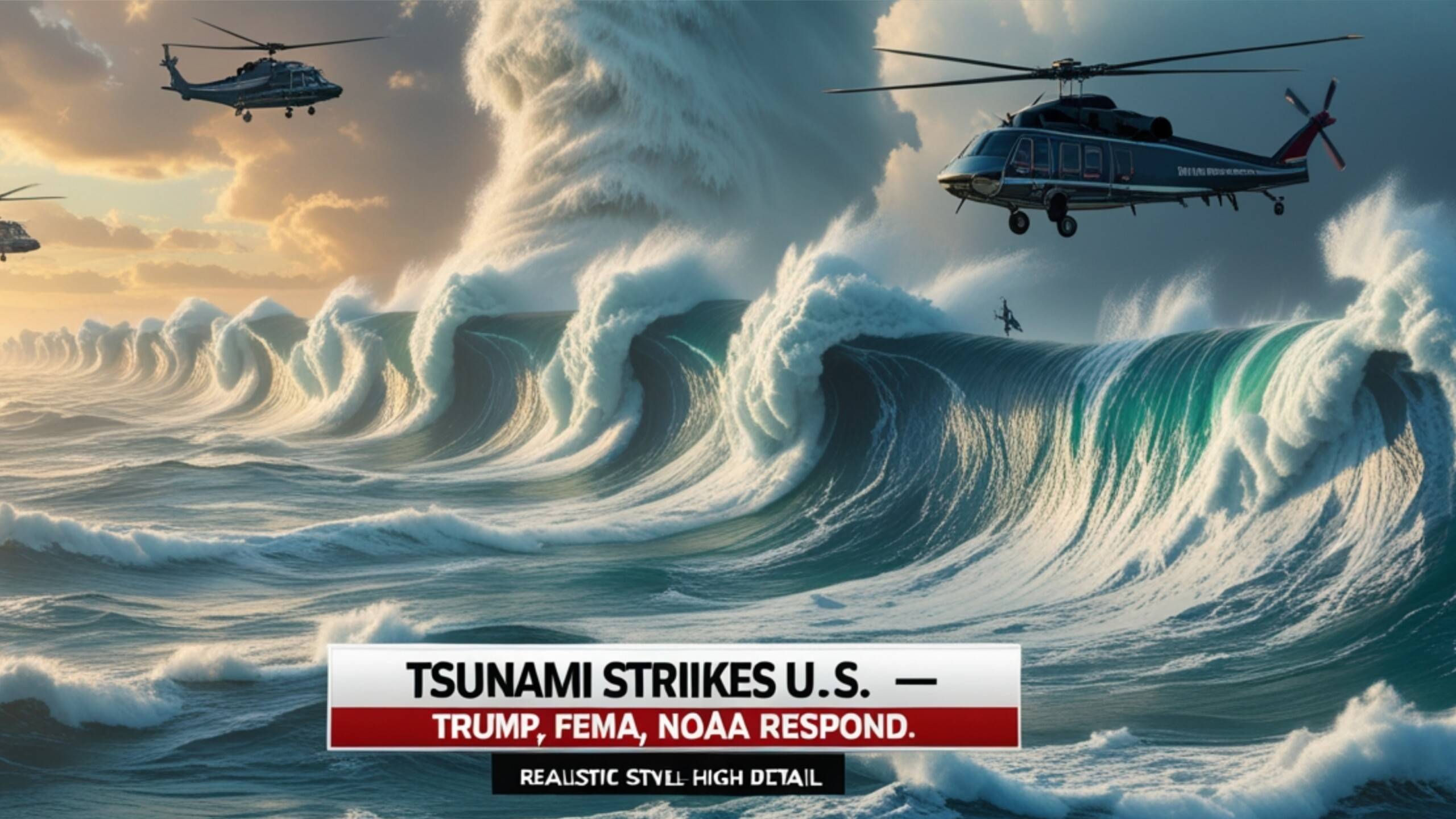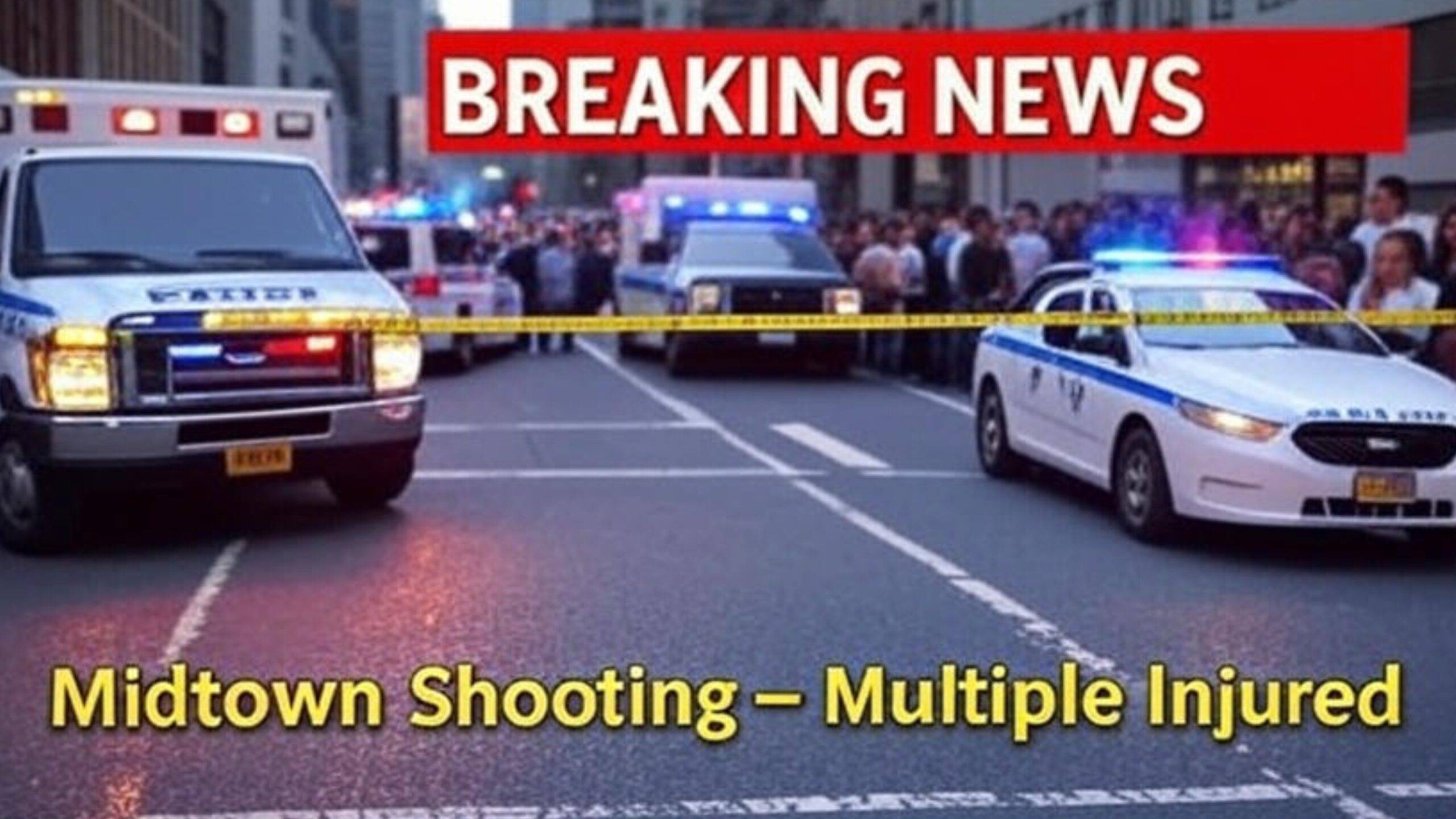A powerful tsunami hits the U.S. coastline, sparking national emergency measures. Former President Donald Trump reacts, FEMA initiates safety protocols, and NOAA experts explain what’s next. Here’s everything you need to know.
Written By : DMG
Dated : 30th July 2025
A Rare and Destructive Event
In an unprecedented natural event, a powerful tsunami struck the eastern coastline of the United States early Tuesday morning. Triggered by a deep-sea earthquake measuring 8.2 on the Richter scale near the Atlantic Ridge, massive waves hit coastal areas of Florida, Georgia, and the Carolinas. The disaster has left thousands displaced and caused severe infrastructure damage across several coastal cities.
Trump Reacts: “We Must Stay Strong”
Former President Donald Trump, addressing the nation via his Truth Social account, shared his thoughts just hours after the tsunami made landfall. “We are monitoring the situation very closely. The safety of American citizens is our priority. We must stay strong in these difficult times,” Trump posted. His statement was widely shared and has sparked discussion about disaster preparedness and federal response.
FEMA Launches Full-Scale Response
The Federal Emergency Management Agency (FEMA) issued a Level 1 emergency alert shortly after the incident. Teams were deployed to affected regions to assist with evacuation, emergency medical care, and shelter provisions. FEMA Administrator Deanne Criswell stated, “We are in close coordination with state and local officials and are using every available resource to support the response and recovery efforts.
NOAA’s Assessment and Recovery Timeline

According to NOAA (National Oceanic and Atmospheric Administration), the wave activity is expected to stabilize within 48–72 hours. NOAA experts are analyzing oceanic pressure shifts and atmospheric patterns to prevent further escalation. A spokesperson noted, “Although the worst has passed, we advise caution as aftershocks may still trigger secondary waves.
Expert Insights on the Tsunami’s Cause
Dr. Laura Jenkins, a climate impact specialist at the University of Miami, commented, “This was a rare and complex tectonic shift, but it aligns with long-standing predictions about increased seismic activity due to climate-related ocean changes.
Public Advisory and Next Steps
Residents in high-alert zones have been advised to remain evacuated until local authorities declare safe conditions. Emergency hotlines are active, and temporary shelters have been set up in schools and community centers across the affected regions.
When Will It Be Safe Again?
Based on FEMA and NOAA joint predictions, full normalization could take anywhere from one week to a month, depending on coastal erosion, clean-up operations, and weather conditions. Federal and state agencies are closely monitoring the situation.
What the People Are Saying
Social media platforms have seen an outpouring of support, with hashtags like #TsunamiUSA and #PrayForFlorida trending nationwide. Many citizens have also raised questions about disaster readiness and environmental changes.
Conclusion: A Call for Preparedness
As the United States begins the slow process of recovery, this event serves as a sobering reminder of nature’s power. With coordination between political leaders like Trump, expert agencies such as FEMA and NOAA, and informed citizens, recovery is underway. But the lessons from this event must shape future readiness policies.
Q. Is there a tsunami coming to California today?
As of now, there’s only an alert. No major tsunami has hit, but residents should stay updated.
Q. How can I prepare for a tsunami?
Have an evacuation plan, listen to local authorities, and avoid coastal areas until the all-clear is given.
Q: What did Donald Trump say about the recent U.S. tsunami disaster?
Donald Trump expressed concern for affected families, praised emergency responders, and called for swift federal aid to rebuild the coastal regions impacted by the tsunami.
Q: How is FEMA responding to the tsunami emergency in the United States?
FEMA has deployed rapid-response teams, set up temporary shelters, and is coordinating with local authorities for rescue operations, relief supplies, and medical assistance in the hardest-hit coastal zones.
Q: What recovery timeline has NOAA predicted after the tsunami hit the U.S. coastline?
According to NOAA, full coastal recovery may take several months depending on the region, with priority given to restoring infrastructure, monitoring aftershocks, and mitigating further environmental risks.













